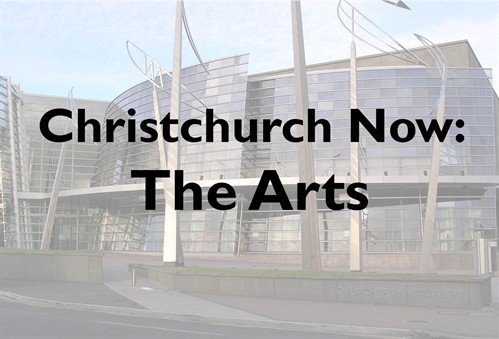Christchurch Now

To commemorate the five year anniversary of the 22 February 2011 Earthquake, CEISMIC is hosting a series of conversations that will bring together people from all corners of Christchurch to discuss a given topic of relevance to them
We see these conversations as a chance to re-centre and reorient ourselves – to reflect on the past five years, and to think about where we’re headed in the next five to come. Rosalee introduces the first in the series: Christchurch Now: The Arts.
Our community has been through a lot in the past five years. It has been a period of mourning, of planning, of demolition and rebuilding, of reimagining and experimentation, of simply trying to cope. As our city begins to emerge out of the recovery phase, we feel that there is a need for connectors and story-tellers in Christchurch. What have we learnt? What were the biggest struggles and the best achievements? Where are we at now?
Our first conversation took place last week, and is centred on the arts: Why art is important for a modern city; the key changes within creative communities since the earthquakes; whether Christchurch has a particular identity when it comes to the arts and what this looks like; what we’re doing well and what we could do better; and where we are headed. I spoke with Sophie Davis (UC Masters student and co-director of North Projects), Lara Strongman (Senior Curator at Christchurch Art Gallery), Gaby Montejo (visual art practitioner and teacher), and Wongi Wilson (professional street artist and graffiti artist).
I want to sincerely thank Sophie, Lara, Gaby and Wongi for being part of our first podcast. As someone who, just over a year ago, was very much embedded in this scene, it is one that remains close to my heart, despite feeling that I have been somewhat absent from the creative community more recently.
Something Wongi said during our conversation resonated with me: “Throughout history, art is always the thing that thrives after a major disaster – it’s easily accessible to people… something you can pick up and run with.”
It reminded me of a reflection I wrote this time last year. I have very much had the experience of ‘picking something up and running with it’. Several ventures in fact, from establishing an art space, to creating my own interactive projects and joining an artist collective. I would be lying if I said that the earthquakes hadn’t provided me with great opportunities, a burst of creative energy, and a city that was more open to the sorts of things I was interested in.
It would appear that many other creative types have had this experience too, particularly those involved in the street art scene. In this podcast, Wongi speaks enthusiastically about the opportunities that have arisen for the street art community in Christchurch, and how this has put us on the world stage.
But we must also recognise that not all creatives have had the same positive experience; in fact for many, the last five years have been downright difficult. The loss of so many spaces has been devastating for visual and performance artists alike, and much energy has been spent setting up temporary spaces, and simply making do.
Gaby commends Christchurch Art Gallery for the massive effort they have put in over the last five years, before finally re-opening on the 19 December last year:
“I think the Gallery did a great job of reminding everybody, ‘Hey we’re still here’. That was a long time being closed. With their publications and their outer spaces projects, there was something for everybody.”
And perhaps their hard work has paid off; Lara confirmed that there have been 100,000 visitors to the Gallery since the re-opening, a testament to just how much this space has been missed, and the value that it holds for Christchurch residents and visitors.
I’ll finish with this poignant quote from Lara:
“The arts are important, but actually what’s really important is artists. Artists imagine things that don’t exist yet, and we need that. We need that in order to be resilient. We need to imagine things that aren’t here, other ways of relating to each other. Other ways of relating to politics, and the economy, and the contemporary world. And contemporary art at its best shows us all kinds of possibilities.”
To listen to Christchurch Now: The Arts, visit https://quakestudies.canterbury.ac.nz/store/object/20496
